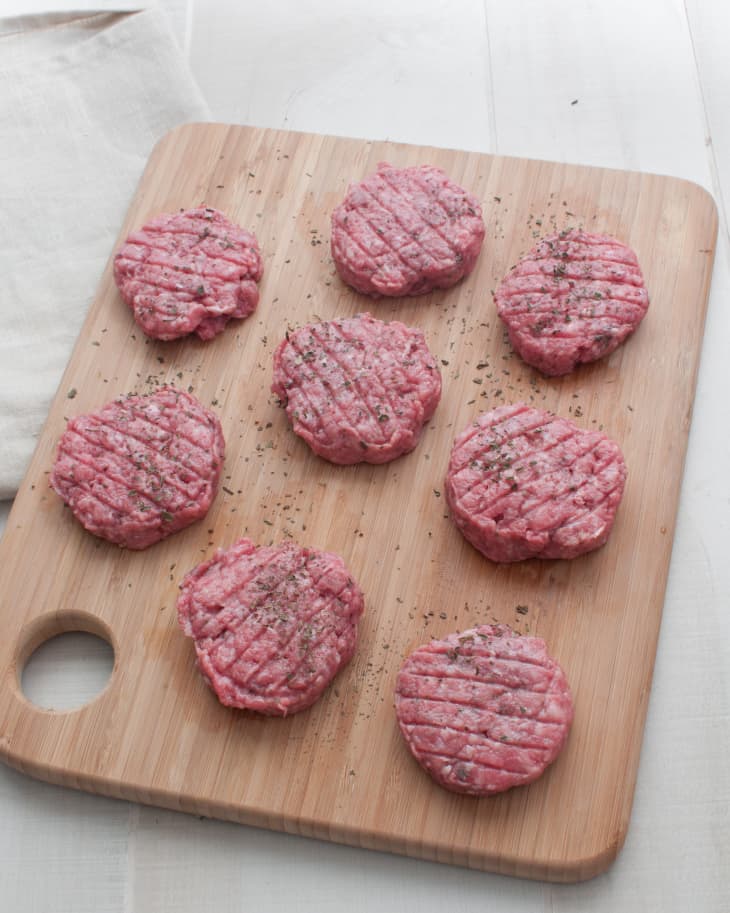Everything You Need to Know About Ground Beef
Whether you use it for hamburgers, meatloaf, or for taco night, ground beef is one of the most popular ways beef is sold, and for good reason. While it’s inexpensive and usually seen as a budget cut, it’s the backbone to many classic American dishes, and even just a small amount can add a lot of meaty flavor to your dish. So where does it come from, and does it matter what kind of ground beef you buy?
What Is Ground Beef?
Ground beef is basically beef that’s been ground or finely chopped, and it’s also historically been called hamburger since it’s the main component of one of America’s favorite dishes. The grinding process tenderizes cuts of beef that normally are very tough, and grinding fatty cuts in with lean cuts helps to reduce the dryness and improve the flavor of traditionally dry cuts.
The Types of Ground Beef
Where the beef is cut from, its fat content, and even the coarseness of the grind can vary. When purchasing ground beef, here are a few common categories that are available:
- Regular ground beef: This usually contains the highest fat content, about 25 to 30%, since it is cut from the trimmings of inexpensive cuts like brisket and shank. Regular ground beef is the least expensive form of ground beef, and while it has the most flavor, it will shrink the most when cooked due to the high fat content. This ground beef is the juiciest and most flavorful.
- Ground chuck: Ground chuck contains 15 to 20% fat and comes from the front area of the animal around the shoulder. This is a great all-purpose ground beef since it is not as fatty as regular ground beef but still has good flavor. Ground chuck can also be labeled as lean ground beef.
- Ground round: This ground beef has about 12% fat and is ground from the lower end of the cow near the tail area. If you’re planning to cook the ground beef into sauce or with vegetables and are being mindful of fat content, ground round is a good choice because it has less fat. And since you’re mixing it with other ingredients, the less-beefy flavor of ground round won’t matter. Ground round can also be labeled as extra-lean ground beef.
- Ground sirloin: This is one of the leanest, but also most expensive, forms of ground beef. It contains about 10 to 14% fat and comes from the midsection of the animal. While it may be the healthiest choice, ground sirloin cooks up the driest of all the kinds of ground beef. Ground sirloin can also be labeled as extra-lean ground beef.
Buying and Storing Ground Beef
Most grocery stores carry more than one form of ground beef. Sometimes they will be labeled with where the cut came from, but your best bet is to rely on the fat content on the label. Well-written recipes will specify which is the preferred type of ground beef for that recipe, usually by fat percentage.
Ground beef can be ground to order at some grocery stores or at specialty butchers, and you may get a choice for the coarseness of the grind or how many times the meat is ground. The general rule is that the finer the grind, or the more times it is ground, the more compact the meat will cook up. Finer grinds are good for densely textured recipes like meatloaf or meatballs, but for dishes where you want a light, juicy texture (like in hamburgers), go for a coarser grind.
Color might not be the best indicator of the freshness of ground beef, even though you might think that pink or red meat is freshest. Sometimes ground beef has been treated with carbon monoxide to retain that color, so the most reliable indicator of freshness is the packaging date.
Ground beef can be stored in the refrigerator for up to two days or frozen for up to six months.
Cooking Ground Beef
Ground beef can be quickly cooked with some onion and spices for a simple taco filling, formed into patties for hamburgers, or slowly cooked into sauces or chilis. The versatility of this cut means that it can go in a lot of directions, and a little bit of ground beef can be stretched with other ingredients if you are looking to eat less meat.
The USDA recommends cooking ground beef to a temperature of 160°F, which is well done, but many people prefer cooking their hamburger patties to rare or medium-rare because they find those levels of doneness juicier and more flavorful.
More About Ground Beef
- How to Cook & Brown Ground Beef
- Back to Basics: 12 Ways to Prepare Ground Beef
10 Ways to Use Good Ol’ Ground Beef
Recipes with Ground Beef
- Freezer Taco Kits
- Chili with Pasta and Cheddar
- How To Make Marvelous Meatloaf
- Slow-Cooked Bolognese Sauce
- Shepherd’s Pie
